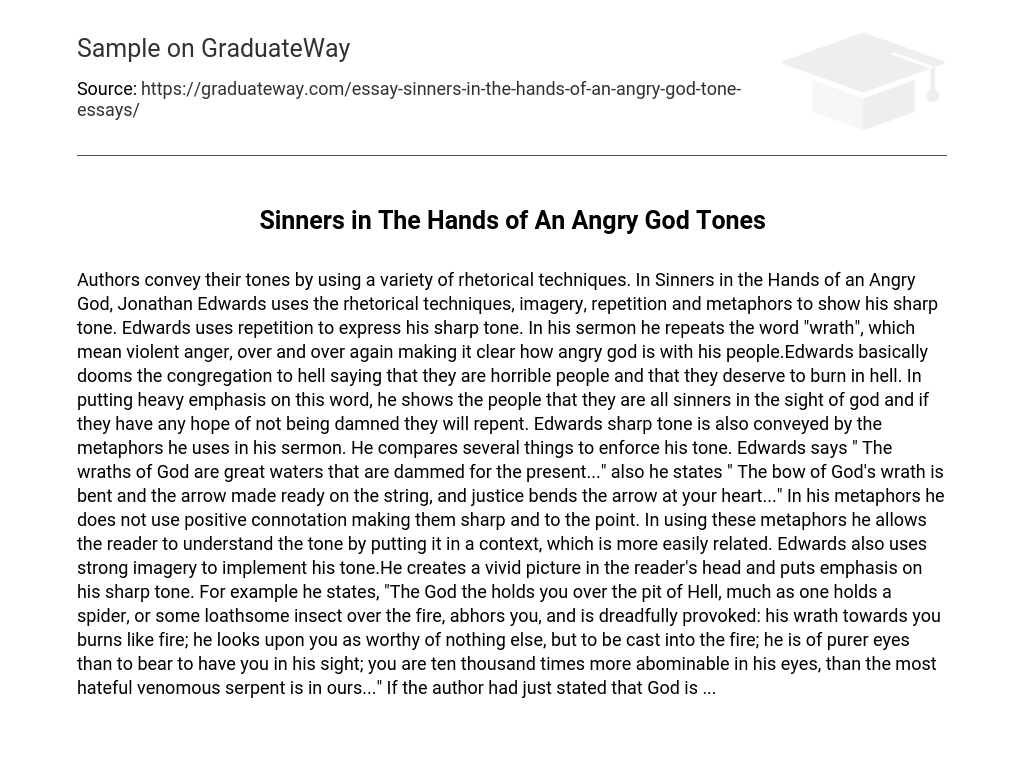Authors convey their tones by utilizing diverse rhetorical techniques. In “Sinners in the Hands of an Angry God,” Jonathan Edwards employs the rhetorical techniques of imagery, repetition, and metaphors to communicate his sharp tone. Edwards makes use of repetition to convey this sharp tone, repeatedly emphasizing the word “wrath,” which conveys violent anger, to emphasize how deeply angered God is with his people. Essentially, Edwards pronounces damnation upon the congregation, asserting that they are terrible individuals who deserve to suffer in hell.
The text emphasizes the concept of sin and repentance, highlighting that all individuals are sinners in the eyes of God. The author, Edwards, adopts a sharp tone throughout his sermon, primarily conveyed through metaphors. Edwards compares various elements to reinforce his tone, such as referring to “the wraths of God” as “great waters that are dammed for the present.” Similarly, he describes “the bow of God’s wrath” being prepared, with justice aiming the arrow at the reader’s heart. By employing these metaphors with negative connotations, Edwards effectively conveys a sharp and direct tone. Furthermore, these metaphors provide a relatable context for readers to better understand the intended tone.
Edwards also utilizes powerful imagery to convey his tone. He paints a vivid mental image and places emphasis on his sharp tone. For instance, he declares, “The God the holds you over the pit of Hell, much as one holds a spider, or some loathsome insect over the fire, abhors you, and is dreadfully provoked: his wrath towards you burns like fire; he looks upon you as worthy of nothing else, but to be cast into the fire; he is of purer eyes than to bear to have you in his sight; you are ten thousand times more abominable in his eyes, than the most hateful venomous serpent is in ours…” Had the author simply stated that God is …





